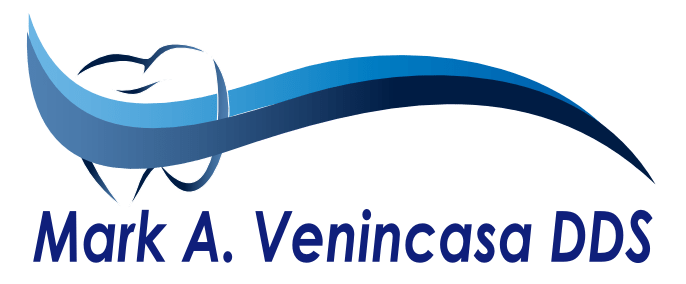Introduction
“The reserve was originally named the National Pharmaceutical Stockpile but was renamed during a 2003 restructuring when additional materials were added to the supply. The stockpile is jointly managed by the departments of Defense and Health and Human Services. . . Warnings about the United States’ lack of preparedness for a serious pandemic have come from both inside the federal government and elsewhere since at least the early 2000s and as recently as last year. . . ‘SARS has infected relatively few people nationwide, but it has raised concerns about preparedness for large-scale infectious disease outbreaks,’ a 2003 analysis from the Government Accountability Office reads. . . HHS Secretary Alex Azar said in April 2019 the BioDefense Summit that a pandemic was among his top concerns, CNN reported on Friday. . . In 2005, the Bush administration published a report that urged investment in local and national stockpiles, increasing domestic production capacity and coordinating research efforts toward cures and vaccines. In 2006, Congress approved expanding the stockpile to include protective gear like N95 surgical masks” (Brown, USA Today, 04-04-2020).
“The decline in federal aid spans three presidencies and many sessions of Congress. . . President Donald Trump sought $100 million in cuts that would have made the situation harder. . . The broader picture is that money to prepare for this day has steadily dwindled over the past 15 years — across three presidents and many sessions of Congress. . . The funds for pandemics remained about the same under Trump (and would have been lower if his budgets were enacted). But compared with where funding stood in 2003, support to build state and local capacity has fallen by half. . . ‘The purchasing power of the federal government is second to none, and it has failed to stockpile or otherwise negotiate pipelines to get access to the personal protective gear and medical equipment that it has known with certainty would be needed in a respiratory pandemic,’ said Ellen Carlin at Georgetown University’s Center for Global Health Science and Security. . . In 2014, about 70% of hospital administrators said they were unprepared for an emerging infectious disease like Ebola. Three years later, only 14% said they weren’t ready. . . In 2018, Congress created a new Infectious Disease Rapid Response Reserve Fund to provide quick money between the time when a crisis strikes and Congress delivers aid with real heft. The fund held $135 million when HHS secretary Alex Azar declared a health emergency in early February, which freed up that money” (Greenberg, Politifact, 03-30-2020).
N95 Masks
“The shortage [of N95 masks] has prompted some groups to call for the federal government to unleash its full reserve of medical supplies contained in the Strategic National Stockpile (SNS), which is controlled by the U.S. Department of Health and Human Services” (Elgin and Tozzi, Bloomberg, 03-18-2020).
“Alex Azar, secretary of HHS, told Congress last month that the stockpile contains 30 million surgical masks and 12 million of the more protective N95 masks. He said there were an additional 5 million N95 masks that may have passed their expiration date. . . Government scientists in 2015 estimated that a severe flu outbreak infecting 20 to 30 percent of the population would require at least 1.7 billion of the N95 respirators” (Elgin and Tozzi, Bloomberg, 03-18-2020).
“The Obama administration significantly depleted the federal stockpile of N95 respirator masks to deal with the H1N1 influenza outbreak in 2009 and never rebuilt the stockpile despite calls to do so, according to reports” (Saavedra, The Daily Wire, 03-26-2020). “In 2006, Congress provided supplemental funds to add 104 million N95 masks and 52 million surgical masks in an effort to prepare for a flu pandemic. But after the H1N1 influenza outbreak in 2009, which triggered a nationwide shortage of masks and caused a 2- to 3-year backlog orders for the N95 variety, the stockpile distributed about three-quarters of its inventory and didn’t build back the supply” (Elgin and Tozzi, Bloomberg, 03-18-2020).
“During the presidency of Barack Obama, the national stockpile was seriously taxed as the administration addressed multiple crises over eight years. About ‘75 percent of N95 respirators and 25 percent of face masks contained in the CDC’s Strategic National Stockpile (∼100 million products) were deployed for use in health care settings over the course of the 2009 H1N1 pandemic response,’ according to a 2017 study in the journal Health Security. . . Again, according to NIH, the stockpile’s resources were also used during hurricanes Alex, Irene, Isaac and Sandy. Flooding in 2010 in North Dakota also called for stockpile funds to be deployed. The 2014 outbreaks of the ebola virus and botulism, as well as the 2016 outbreak of the zika virus, continued to significantly tax the stockpile with no serious effort from the Obama administration to replenish the fund.’” . . . During the presidency of Donald Trump, analysts have warned the United States is not prepared for a serious pandemic. . . The Trump administration has not taken significant steps to replenish the masks in the Strategic National Stockpile” (Brown, USA Today, 04-04-2020).
“’The stockpile can only be a bridge, it can never be the total solution,’ said Greg Burel, the former director of the Strategic National Stockpile, who now runs a consulting company focused on emergency and medical preparedness. The stockpile has only received about $600 million per year in appropriations from Congress and that money has to be stretched to cover medicine and supplies for everything from potential anthrax attacks to influenza outbreaks to responses to natural disasters like earthquakes and floods” (Elgin and Tozzi, Bloomberg, 03-18-2020).
“’After the swine flu epidemic in 2009, a safety-equipment industry association and a federally sponsored task force both recommended that depleted supplies of N95 respirator masks, which filter out airborne particles, be replenished by the stockpile,’ the Los Angeles Times reported” (Brown, USA Today, 04-04-2020). “The last time [the stockpile] was deployed on a national basis was during the 2009 H1N1 influenza pandemic, when the stockpile distributed 85 million N95 respirators, along with millions of other masks, gowns and gloves. Afterward, trade groups and public health agencies called for the stock of masks to be replenished, but the supplies were not significantly restored, according to health-care industry and public health experts” (Goldstein et al., The Washington Post, 03-28-2020).
“There is no indication that the Obama administration took significant steps to replenish the supply of N95 masks in the Strategic National Stockpile after it was depleted from repeated crises. Calls for action came from experts at the time concerned for the country’s ability to respond to future serious pandemics. Such recommendations were, for whatever reason, not heeded” (Brown, USA Today, 04-04-2020).
“In February 2019, the White House was planning for a presidential executive order on preparing for a potential flu pandemic. HHS requested a more than $11 billion investment over 10 years for ASPR [Assistant Secretary for Preparedness and Response], including $2.7 billion for ‘treatment and control,’ according to a document read by a Washington Post reporter that said some of those funds would go toward ‘better protective devices, manufactured faster.’ . . But the executive order issued by Trump in September 2019 did not include that money” (Goldstein et al., The Washington Post, 03-28-2020).
“An OMB spokesperson said Saturday, “Funding has never been a constraint on agency action in coronavirus response. . . . The president has made it clear that the federal government will throw everything we have at this” (Goldstein et al., The Washington Post, 03-28-2020).
Sources Cited
Brown, Matthew. “Fact Check: Did the Obama Administration Deplete the Federal Stockpile of N95 Masks?” (April 4, 2020). USA Today. Accessed April 21, 2020. https://www.usatoday.com/story/news/factcheck/2020/04/03/fact-check-did-obama-administration-deplete-n-95-mask-stockpile/5114319002/.
Elgin, Ben and John Tozzi. “Hospital Workers Make Masks from Office Supplies Amid U.S. Shortage” (March 18, 2020). Bloomberg. https://www.bloomberg.com/news/articles/2020-03-18/hospital-makes-face-masks-covid-19-shields-from-office-supplies.
Goldstein, Amy, Lena H. Sun and Beth Reinhard. “Desperate for Medical Equipment, States Encounter a Beleaguered National Stockpile” (March 28, 2020). The Washington Post. Accessed April 21, 2020. https://www.washingtonpost.com/national/health-science/desperate-for-medical-equipment-states-encounter-a-beleaguered-national-stockpile/2020/03/28/1f4f9a0a-6f82-11ea-aa80-c2470c6b2034_story.html.
Greenberg, Jon. “Federal Pandemic Money Fell for Years. Trump’s Budgets Didn’t Help” (March 30, 2020). The Poynter Institute, Politifact. Accessed April 21, 2020). https://www.politifact.com/article/2020/mar/30/federal-pandemic-money-fell-years-trumps-budgets-d/.
Saavedra, Ryan. “Obama Admin Allegedly Depleted Federal Stockpile of N95 Masks, Never Replaced, Reports Say” (March 26, 2020). The Daily Wire. Accessed April 21, 2020. https://www.dailywire.com/news/obama-admin-allegedly-depleted-federal-stockpile-of-n95-masks-never-replaced-reports-say.


